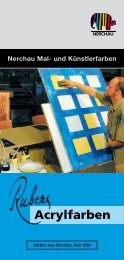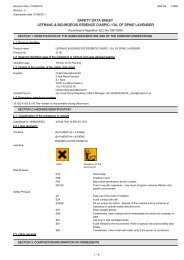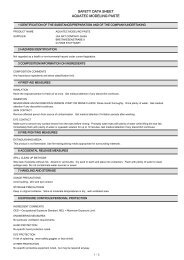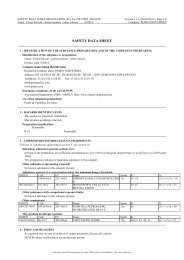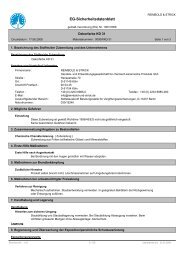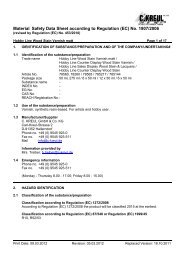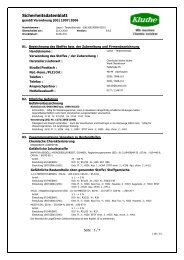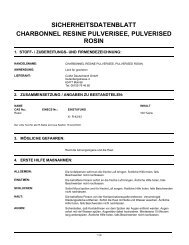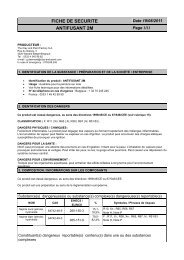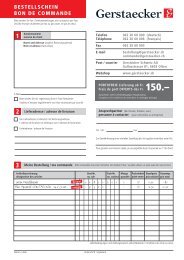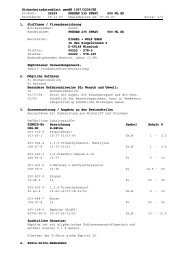Arno Witgert, Inh. Dipl.-Ing. (FH) Michael Liebig e. K. - Gerstaecker
Arno Witgert, Inh. Dipl.-Ing. (FH) Michael Liebig e. K. - Gerstaecker
Arno Witgert, Inh. Dipl.-Ing. (FH) Michael Liebig e. K. - Gerstaecker
You also want an ePaper? Increase the reach of your titles
YUMPU automatically turns print PDFs into web optimized ePapers that Google loves.
Harmonised SDS for ceramic bodies (compliant with REACH) -01 January 2009<br />
Page 2/7<br />
2. Hazards Identification<br />
Ceramic bodies do not meet the criteria for classification as dangerous as defined in Directive 67/548 EEC.<br />
The product does give potential for generation of respirable dust during handling and use. Dust may contain<br />
respirable crystalline silica. Prolonged and or massive inhalation of respirable crystalline silica dust may cause<br />
lung fibrosis, commonly referred to as silicosis. Principal symptoms of lung fibrosis are cough and<br />
breathlessness. Occupational exposure to respirable dust and respirable crystalline silica should be monitored and<br />
controlled.<br />
3. Composition / Information on <strong>Ing</strong>redients<br />
3.1. Chemical composition:<br />
Kaolinatic clays, hydrous aluminium silicate - Al 2 Si 2 O 5 (OH) 4<br />
May contain mineral or chemical additives.<br />
3.2 Components:<br />
Name % by weight CAS-No EINECS No EU Classification<br />
Kaolinitic Clay 100% 999999-99-4 310-127-6 No classification<br />
3.3. Components presenting a health hazard:<br />
Kaolinitic clay may contain crystalline silica (not listed in Annex I of Directive 67/548/EEC).<br />
4. First aid measures<br />
No action to be avoided, nor special instructions for rescuers.<br />
Eye contact<br />
For direct contact, flush the affected eye with clean water. If irritation develops, seek medical attention.<br />
<strong>Ing</strong>estion<br />
No special first aid measure<br />
<strong>Inh</strong>alation<br />
Remove from source to fresh air. If symptoms occur, seek medical attention<br />
Skin contact<br />
Wash with soap and water, rinse after washing<br />
5. Fire-fighting measures<br />
Non flammable, non explosive. No hazardous releases in case of fire.<br />
6. Accidental release measures<br />
Personal precautions<br />
In case of exposure to prolonged or high level of airborne dust, wear a personal respirator in compliance with<br />
national legislation.<br />
Environmental precautions<br />
No special requirement<br />
Methods for cleaning up<br />
Avoid dry sweeping and use water spraying or ventilated vacuum system to prevent dust formation.





